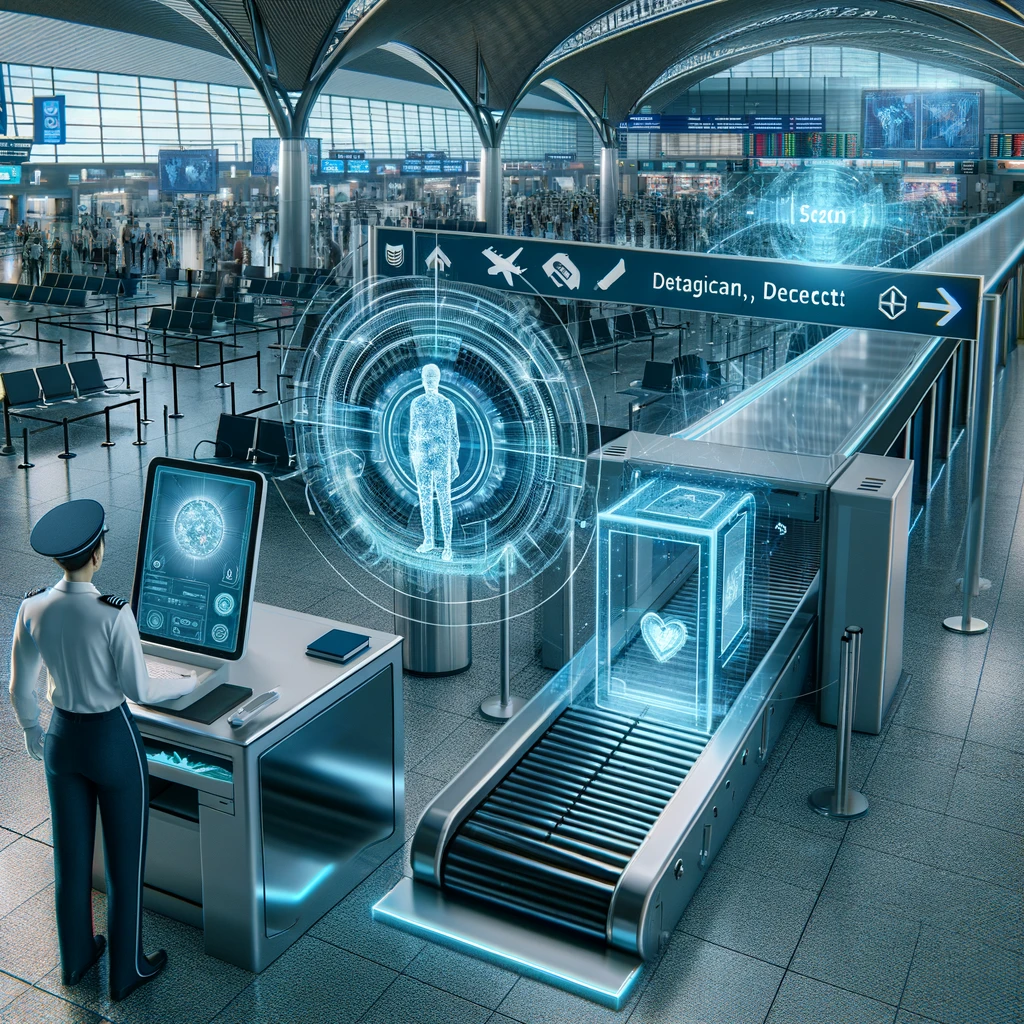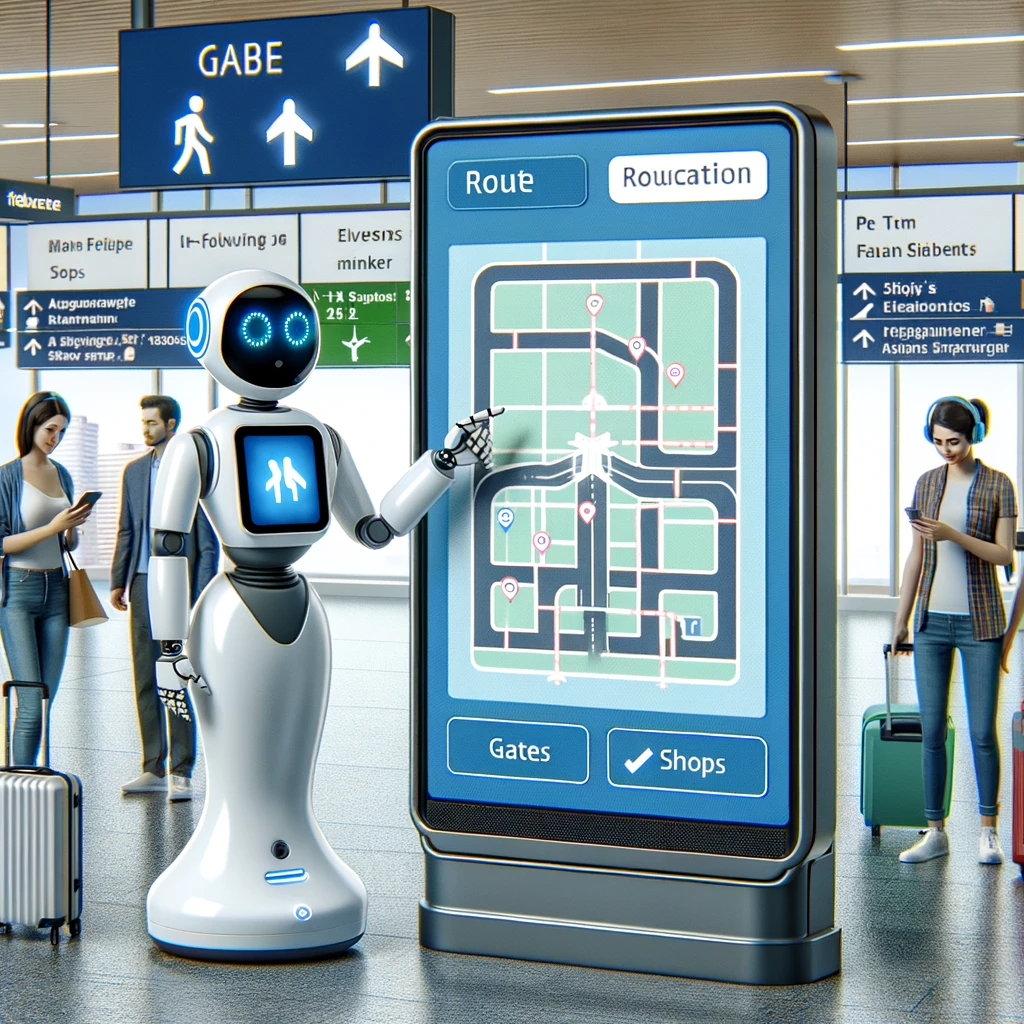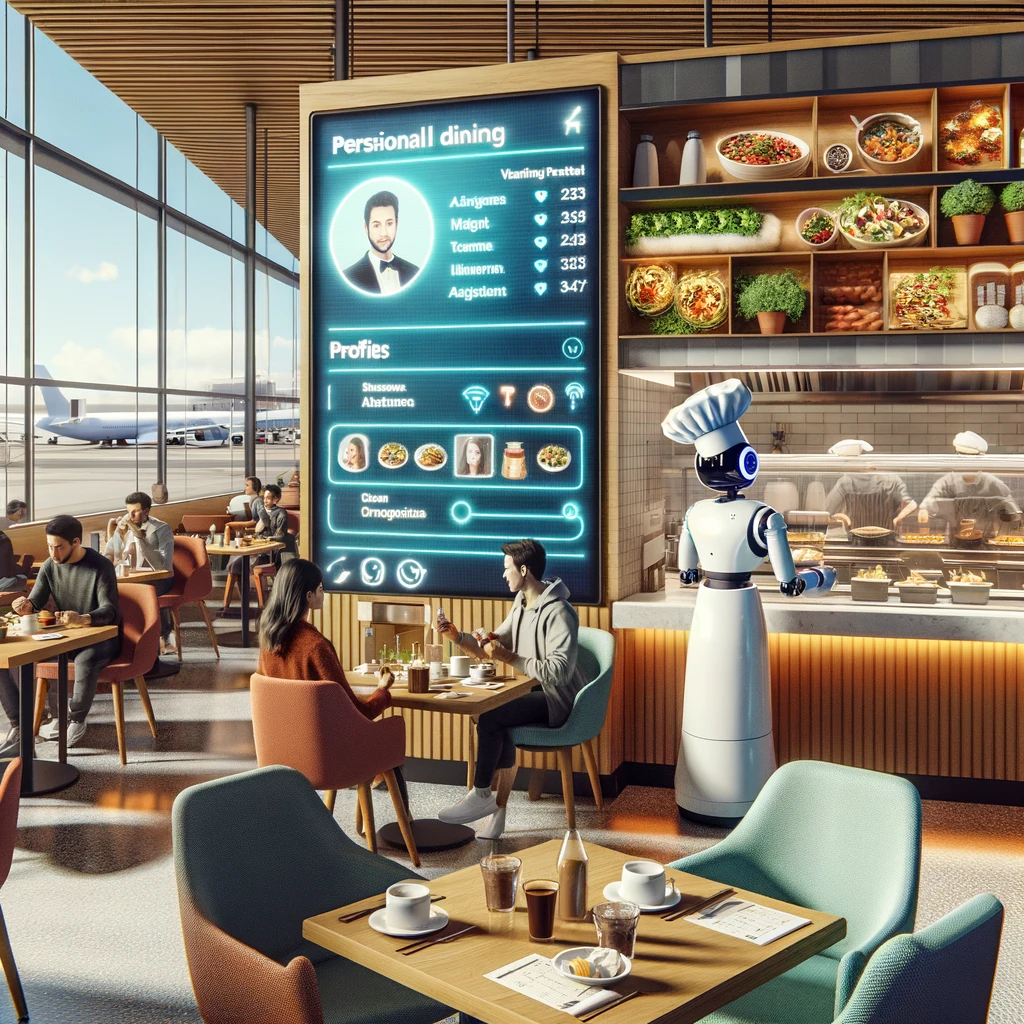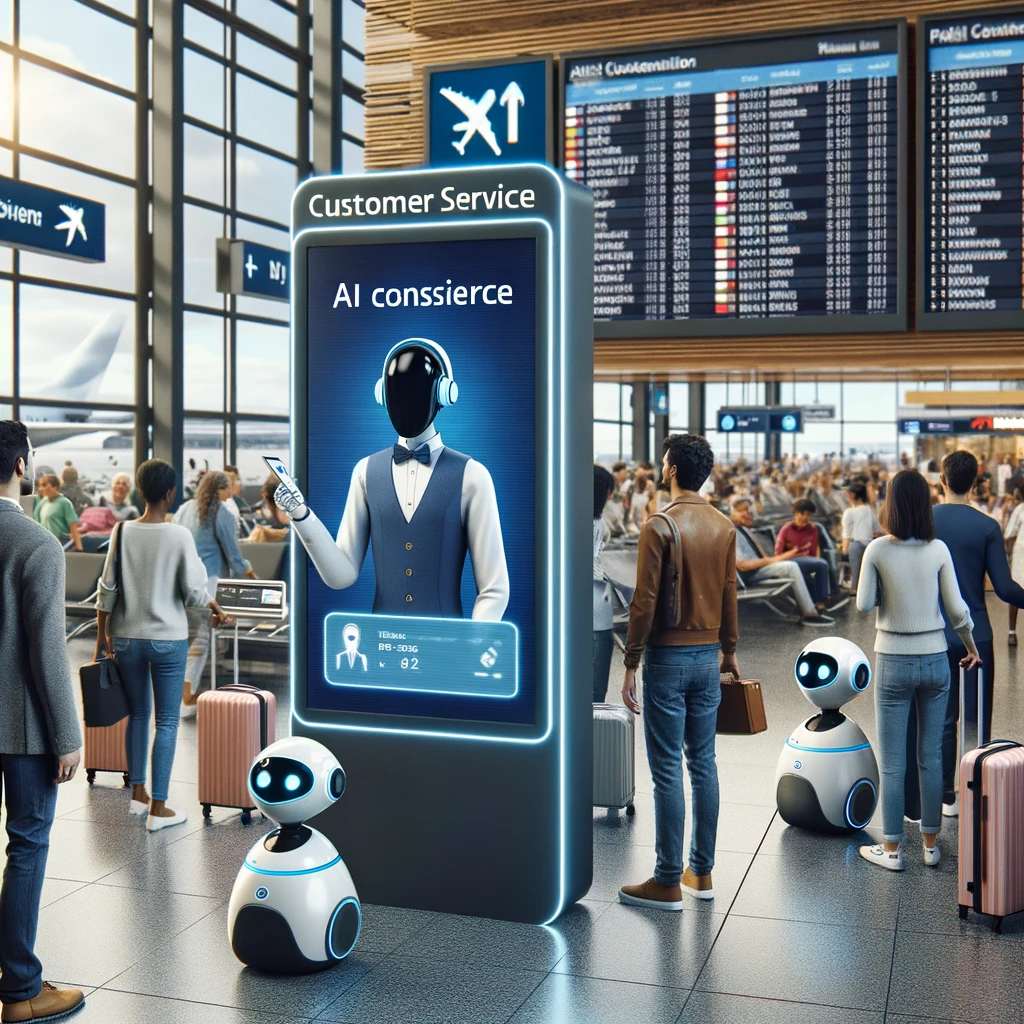The Next Generation of Air Travel
By: ChatGPT
Originally Generated: November 7, 2023
Introduction: The Dawn of AI in Airports
Airports are the crossroads of the world, where every day, millions of people pass through, each on a unique journey. The complexities of managing such hubs of activity are immense, and as technology evolves, so does the infrastructure of these gateways. Artificial intelligence (AI) and robotics are at the forefront of this evolution, propelling airports into the future with incredible advancements in security, efficiency, and passenger experience.
Part 1: Security - The AI Sentinel

Enhanced Threat Detection
AI systems are revolutionizing airport security by providing more accurate threat detection, reducing false alarms, and increasing throughput. Advanced algorithms analyze x-ray images to identify prohibited items with greater precision than ever before.
Biometric Checkpoints
Biometric verification uses facial recognition, fingerprints, and iris scans to strengthen security while streamlining the identification process. This technology speeds up passenger flow and provides a seamless, contactless experience.
Automated Surveillance
Robots equipped with cameras and sensors patrol airport terminals, providing real-time surveillance data to security personnel. These robotic guards are tireless, constantly vigilant, and can cover more ground without fatigue.
Part 2: Baggage Handling - The Robotic Workforce

Smart Luggage Systems
Robots and AI work together to sort and transport luggage. Smart systems track bags from check-in to loading, ensuring luggage arrives at the right aircraft and reducing the chance of loss.
Autonomous Luggage Vehicles
Driverless carts transport luggage across the tarmac, programmed to navigate busy airport environments safely and efficiently, while AI systems monitor and optimize their routes in real time.
Part 3: Navigating the Maze - AI as a Personal Guide

Interactive Wayfinding
AI-powered kiosks and mobile apps provide personalized route suggestions, helping passengers navigate complex airport layouts with ease and making sure they get to their gates on time.
Smart Signage
Dynamic signs adjust the information displayed based on real-time data, such as crowd density and flight schedules, guiding passengers along the most efficient paths through the airport.
Robot Escorts
Robotic assistants can guide passengers to their gates, carry luggage, and even provide information about airport services in multiple languages, ensuring a helpful and personalized touch.
Part 4: Dining and Shopping - A Tailored Experience

AI-Driven Restaurant Recommendations
Machine learning algorithms analyze passenger profiles and past behavior to suggest dining options that align with their preferences, dietary restrictions, and available time before boarding.
Robotic Baristas and Chefs
Automated coffee kiosks and robot chefs can prepare meals and beverages, offering a consistent product quickly and efficiently, catering to the rush of airport timing.
Smart Billboards
Imagine walking through the terminal when a robot billboard drives by, advertising a cheeseburger because it knows from your travel history that it’s your preferred comfort meal. These smart ads use real-time analytics to display targeted content.
Part 5: The AI Concierge - Enhancing Customer Service

Instant Assistance
Interactive AI chatbots and virtual assistants provide passengers with instant answers to their questions, whether it’s about their flight status or where to find the best coffee in the terminal.
Language Translation
Language barriers become a thing of the past with AI-powered translation services, facilitating communication between airport staff and travelers from all over the world.
Lost and Found Robots
Robotic assistants help passengers locate lost items with an AI system that catalogs and tracks found items using image recognition, making retrieval processes more efficient.
Part 6: Behind the Scenes - AI in Airport
Operations
Operational efficiency is crucial for airport management. AI helps in predictive maintenance of airport facilities, forecasting passenger flow to optimize staffing, and analyzing weather data to minimize disruption.
Conclusion: Embarking on a Journey into the Future
The integration of AI and robotics into airport ecosystems marks the beginning of a new era in air travel. This fusion of technology and human-centric design promises enhanced security, greater operational efficiency, and a more personalized and pleasant journey for travelers. As we stand on the brink of this new age, one thing is clear: the future of air travel is not just about reaching the destination; it’s about the innovation and experience along the way.
The emergence of AI and robotics in airports is transforming the landscape of air travel. By leveraging the power of these technologies, airports are becoming safer, more efficient, and more enjoyable. This deep dive into the subject has uncovered just the tip of the iceberg, and as technology continues to advance, the possibilities are limitless. Stay tuned to see how the synergy of AI and robotics will continue to elevate the travel experience to new heights.